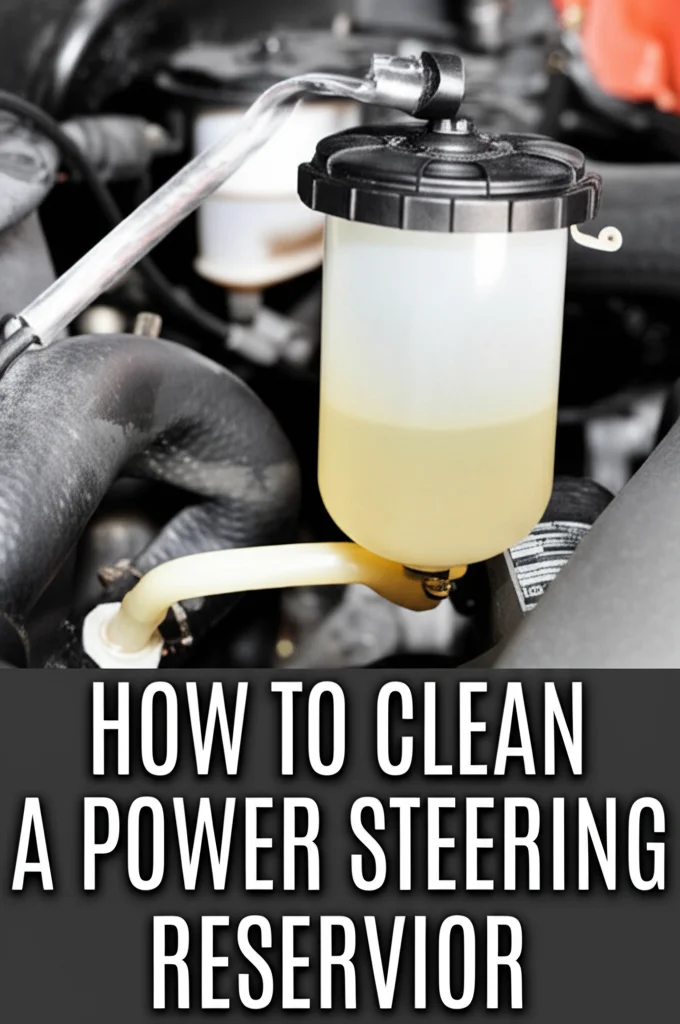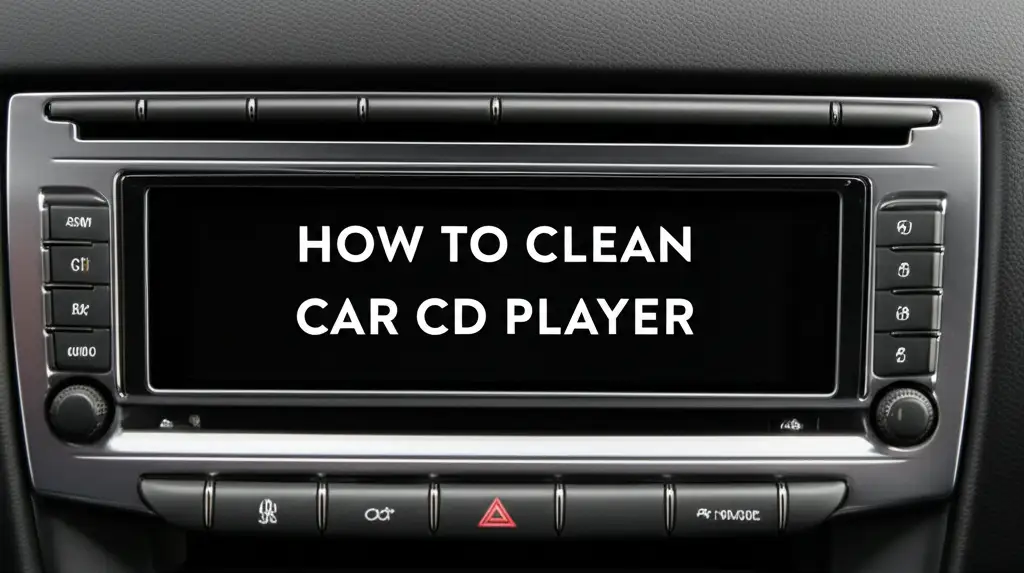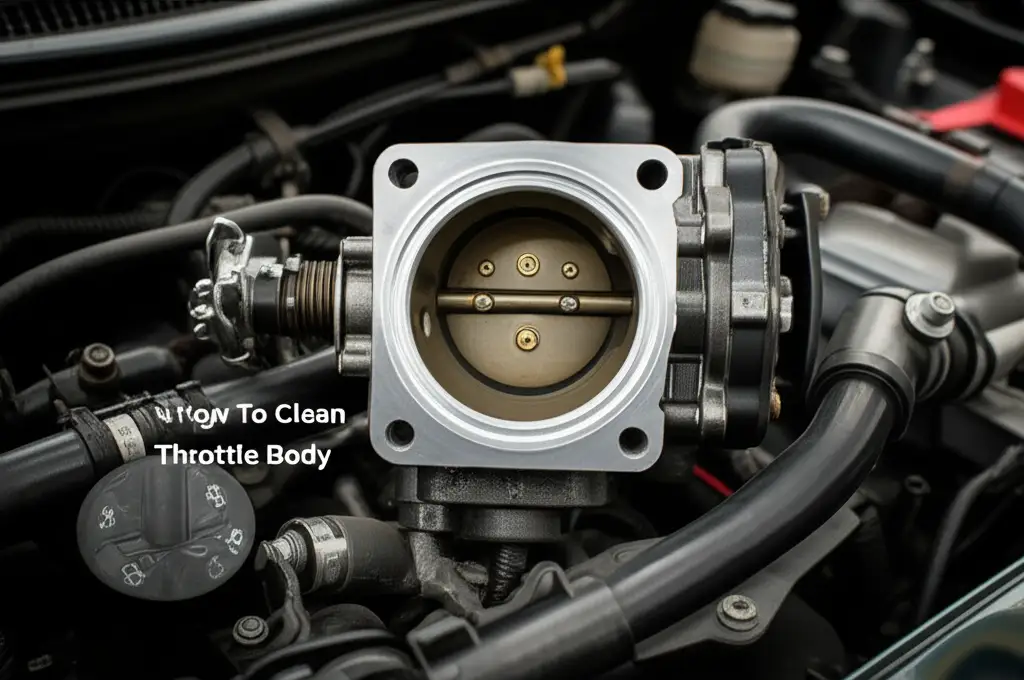· Car Maintenance · 7 min read
How To Clean A Power Steering Reservoir

Keeping Your Ride Smooth: How To Clean A Power Steering Reservoir
Have you noticed your steering feeling a little stiff or hearing a whining noise when you turn the wheel? It could be a sign of a dirty power steering reservoir. A clean reservoir ensures your power steering system functions correctly, protecting expensive components. This guide will walk you through how to clean your power steering reservoir, saving you money and keeping your car running smoothly. We’ll cover everything from safety precautions to the cleaning process itself, ensuring you have all the information you need.
Takeaway:
- Regularly check your power steering reservoir for debris.
- Cleaning the reservoir helps maintain optimal system performance.
- Proper cleaning can extend the life of your power steering pump.
- Always use the correct type of power steering fluid.
What does it mean to clean a power steering reservoir?
Cleaning a power steering reservoir involves removing old, contaminated fluid and any sediment buildup inside the reservoir itself. This ensures clean fluid circulates through the system, lubricating components and preventing damage.
Why Cleaning Your Power Steering Reservoir Matters
Your power steering reservoir isn’t just a container for fluid; it’s a crucial part of the system. Over time, dirt, metal shavings, and degraded fluid can accumulate inside. This contamination can clog filters, damage the power steering pump, and lead to reduced steering performance. Regularly cleaning the reservoir helps prevent these issues. Think of it like changing the oil in your engine – it’s preventative maintenance that saves you from costly repairs down the road. A clean reservoir also allows for a more accurate reading of the fluid level, ensuring proper operation.
Gathering Your Supplies for Power Steering Reservoir Cleaning
Before you begin, gather the necessary supplies. You’ll need:
- The correct type of power steering fluid for your vehicle (check your owner’s manual).
- A clean container to catch the old fluid.
- A funnel.
- Shop towels or rags.
- Gloves (to protect your hands).
- A turkey baster or siphon pump.
- Optional: Reservoir cleaning kit (available at most auto parts stores).
- Optional: Brake cleaner for external cleaning.
Having everything ready beforehand will make the process much smoother and more efficient. Using the right fluid is critical; mixing different types can cause serious damage. If you’re unsure about the correct fluid, consult a mechanic.
Step-by-Step Guide to Cleaning the Reservoir
Now, let’s get to the cleaning process. Here’s a breakdown of the steps:
- Locate the Reservoir: The power steering reservoir is usually a plastic container located in the engine bay. Consult your owner’s manual if you’re having trouble finding it.
- Safety First: Ensure the engine is off and cool before starting. Wear gloves to protect your hands from the fluid.
- Remove Old Fluid: Use a turkey baster or siphon pump to remove as much of the old fluid as possible from the reservoir. Dispose of the old fluid responsibly at an auto parts store or recycling center.
- Inspect the Reservoir: Examine the inside of the reservoir for any remaining sediment or debris.
- Clean the Reservoir: If there’s stubborn residue, use a reservoir cleaning kit according to the manufacturer’s instructions. Alternatively, you can carefully rinse the reservoir with a small amount of fresh power steering fluid, ensuring it’s thoroughly drained afterward.
- Refill with Fresh Fluid: Using a funnel, carefully refill the reservoir with the correct type of power steering fluid to the “full” mark.
- Check the Fluid Level: Start the engine and turn the steering wheel lock-to-lock several times. Check the fluid level again and add more if needed.
Cleaning the reservoir is a relatively simple task, but taking your time and being careful will ensure the best results. If you notice significant contamination or damage to the reservoir, it may need to be replaced.
Addressing Common Issues During Reservoir Cleaning
Sometimes, you might encounter a few challenges during the cleaning process. Here are some common issues and how to address them:
- Stuck Reservoir Cap: If the reservoir cap is stuck, try gently twisting it while applying upward pressure. Avoid using excessive force, as you could damage the cap or reservoir.
- Difficult-to-Remove Sediment: For stubborn sediment, a reservoir cleaning kit is your best bet. These kits typically contain a solvent that helps dissolve the buildup.
- Low Fluid Level After Cleaning: It’s normal for the fluid level to drop slightly after cleaning. Continue to monitor the level and add fluid as needed.
- Persistent Whining Noise: If the whining noise persists after cleaning the reservoir and refilling with fresh fluid, there may be a more serious issue with the power steering pump or other components. In this case, it’s best to consult a mechanic.
Don’t hesitate to seek professional help if you’re unsure about any part of the process.
Maintaining a Clean Power Steering System
Cleaning the reservoir is a great start, but maintaining a clean power steering system requires ongoing effort. Here are a few tips:
- Regular Fluid Checks: Check the power steering fluid level regularly (at least once a month) and top it off as needed.
- Fluid Flushes: Consider having a power steering fluid flush performed by a mechanic every 30,000 to 60,000 miles. This will remove all the old fluid and debris from the entire system. You can learn more about maintaining your vehicle’s fluids by checking out resources on how to clean power steering fluid off asphalt.
- Inspect for Leaks: Regularly inspect the power steering hoses and connections for leaks. Address any leaks promptly to prevent fluid loss and potential damage.
- Avoid Oversteering: While it’s not always possible, avoid excessive or abrupt steering maneuvers, as this can put extra strain on the system.
- Keep the Reservoir Clean Externally: Wipe down the exterior of the reservoir with a clean cloth to prevent dirt and grime from accumulating. If needed, use a mild degreaser. You might also find it helpful to learn how to clean windows after power washing to maintain visibility.
Frequently Asked Questions (FAQs)
Q: How often should I clean my power steering reservoir?
A: It’s generally recommended to clean your power steering reservoir every 30,000 to 50,000 miles, or as needed if you notice signs of contamination or reduced steering performance.
Q: What type of power steering fluid should I use?
A: Always use the type of power steering fluid specified in your vehicle’s owner’s manual. Using the wrong fluid can cause serious damage to the system.
Q: Can I use brake cleaner to clean the reservoir?
A: While brake cleaner can be used to clean the outside of the reservoir, it should never be used inside, as it can damage the internal components.
Q: What if I can’t remove all the old fluid from the reservoir?
A: Removing as much of the old fluid as possible is ideal, but it’s okay if you can’t get it all out. The fresh fluid will gradually mix with the remaining old fluid.
Q: Is it normal for the power steering fluid to be slightly discolored?
A: Some discoloration is normal as the fluid ages, but if the fluid is dark brown or black, it’s a sign that it needs to be changed.
Conclusion: A Smooth Ride Starts with a Clean Reservoir
Cleaning your power steering reservoir is a simple yet effective way to maintain your vehicle’s steering performance and prevent costly repairs. By following the steps outlined in this guide, you can keep your power steering system running smoothly for years to come. Remember to always use the correct type of fluid and dispose of the old fluid responsibly. Don’t underestimate the importance of preventative maintenance – a little effort now can save you a lot of trouble later. If you’re looking for more ways to keep your vehicle looking its best, consider learning how to clean a car.
- power steering reservoir
- power steering fluid
- car maintenance
- automotive repair
- fluid flush




